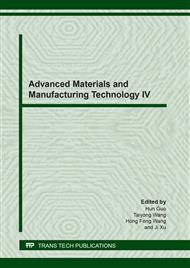p.54
p.63
p.72
p.82
p.96
p.104
p.115
p.125
p.135
The Electric Properties of the Medium inside the Crack Effects on the Electric-Field-Induced Domain Evolution in Ferroelectric
Abstract:
Effects of the electric inclusion in ferroelectrics on the stress and electric field concentration and polarization switching are investigated based on a phase field approach containing the time-dependent Ginzburg-Landau equation. To capture a clear physical picture with the simulation, the crack medium in the electric inclusion is taken into account explicitly as a crack fluid medium as water, oil or air in region. The simulations exhibit a macroscopic electric field concentration in the electric inclusion filled with air, and a significant influence on the domain evolution from the micro perspective, while the electric inclusion filled with water have little influence. The numerical calculations indicated that, when the dielectric constant inside the flaw are much smaller than the dielectric constant of the ferroelectric matrix, the electric field inside the crack medium are enhanced much higher than the applied electric loading. The result implies the domain evolution takes place with the minimization of total free energy, which involves the high electric field energy derived from the electric inclusion. Therefore, the crack fluid medium in ferroelectric plays in importation role in the effect on the non-uniform distribution of the stress and electric field.
Info:
Periodical:
Pages:
96-103
Citation:
Online since:
October 2020
Authors:
Price:
Сopyright:
© 2020 Trans Tech Publications Ltd. All Rights Reserved
Share:
Citation:


